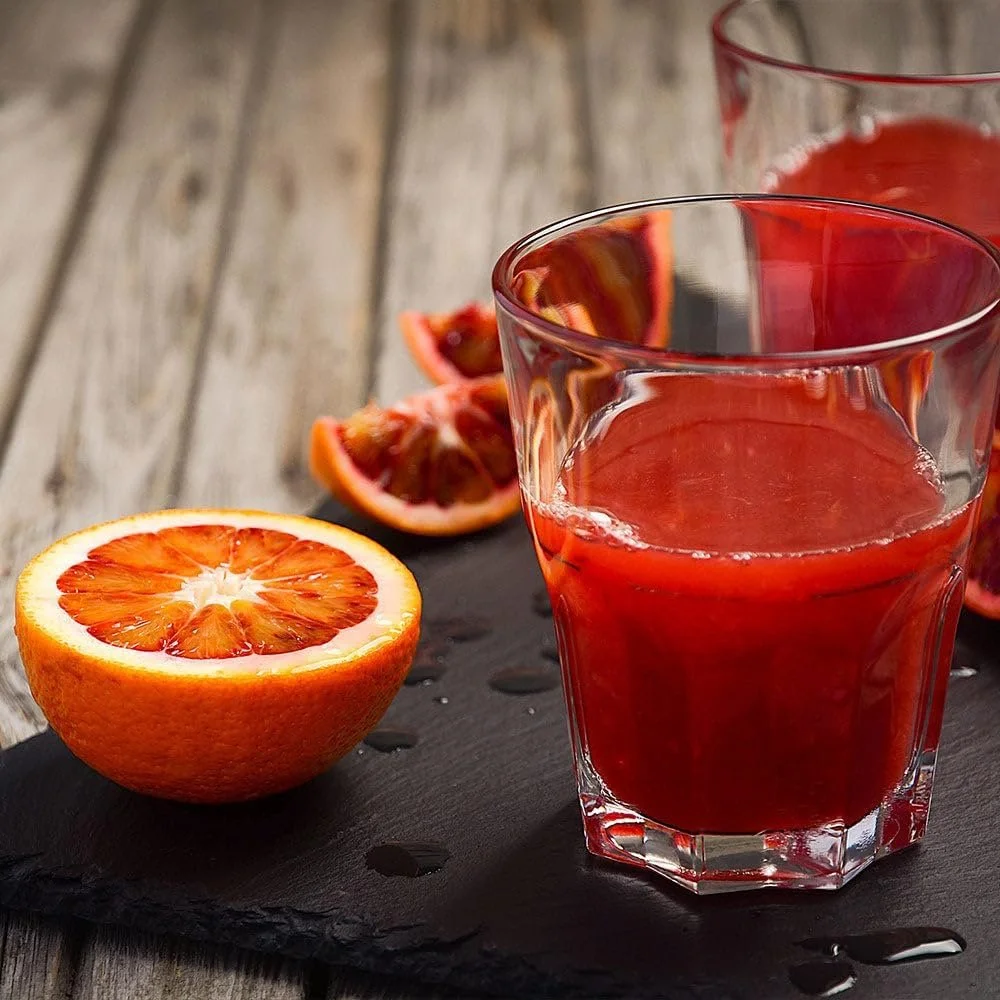Blood Orange
A sweet alternative to better known oranges, this fruit is believed to be the result of a natural mutation of a sweet orange. The flesh of a blood orange is brilliantly dark pink, maroon, or even dark blood red (hence, the name). The fruit has raspberry edge to its flavor.
The red color ceom from anthocyanin, which develops when the citrus fruit ripens during warm days tempered by cooler nights. Anthocyanin is an antioxidant, and starts to develop along the edges of the peel and then follows the edges of the segments before moving into the flesh of the orange, so blood oranges can be lined or streaked when they were harvested.
First grown in Sicily, Italy, blood oranges are now harvested in Texas and California.
Preparation
Blood oranges can be eaten fresh by hand, but they can be difficult to peel.
When using the fruit in salads, tarts, or other dishes, cut into sections (called "supremes" by chefs) and remove the pith and peel (these sections are called "supremes" by chefs).
When juicing, consume the juice the same day it's juice as the blood orange is sweeter than classic oranges and ferments quickly.
Nutrition
This fruit is rich in the antioxidant anthocyanin, which is responsible for its distinctive red color. Anthocyanin has been shown to diminish the risk of heart disease and some types of cancer, lower LDL cholesterol, reduce the risk of cataracts and help the body heal.
Selection
Like most citrus, blood oranges are harvested in winter and can be found in U.S. markets from December into May, depending on location and variety. The Moro variety is usually available from December through March, while the Tarocco is in season from January through May.
Storage
Blood oranges may be stored at room temperature for up to 1 week, or refrigerated for up to 3 weeks..
Cultivation
Blood orange trees do well in warm, sunny climates but will not withstand severe winters and heavy frost. Healthy trees yield fruit, but their exact ripening times are heavily dependent upon growing conditions. They bloom in early spring and generally will not produce fruit the first growing season.
Varieties
The most popular variety of blood orange is the Sicilian red orange, which is only grown in Sicily. Other varieties include: Moro, Ruby Blood, Sanguinello (popular in Spain), Tarocco, Burris, Delfino, Khanpur, Red Valencia, Sanguina Doble Fina, Washington Sanguine, and Vaccaro.


